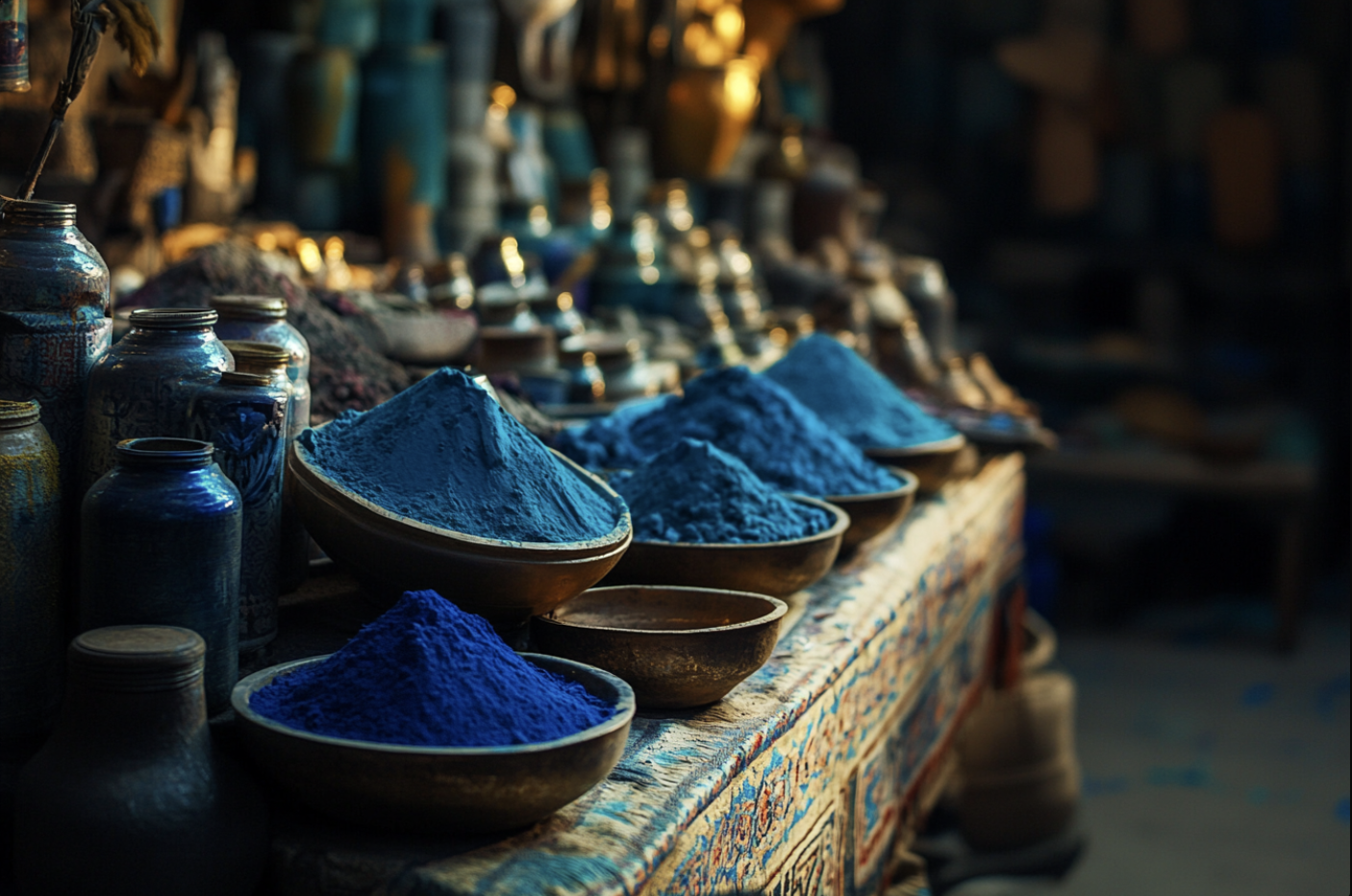The Sacred Language of Blue
In every ancient myth, in every whispered story passed down through generations, there's always been something mysterious about blue. Not just any blue—I'm talking about that deep, endless blue that pulls you in like a cosmic dance between the ocean and the sky, the kind that makes you wonder if you're looking up or down, swimming or floating.
You see, our ancestors knew something we're just beginning to remember. They understood that blue wasn't just a color—it was a language spoken by the divine. The Egyptians painted their gods in lapis lazuli, believing this sacred blue held the secrets of the stars. The Mayans offered their most precious blue pigments to their gods, a sacrifice more valuable than gold. And in ancient Persia, where my roots begin, turquoise blue was thought to be a fragment of the sky that had fallen to Earth.
But here's the real magic: blue has always been the rarest color in nature, the hardest pigment to capture, to hold, to create. Think about it—our planet is wrapped in blue, yet for centuries, artists broke their hearts trying to possess it. They ground precious stones, they fermented plants in their urine (yes, really!), they traded fortunes for a handful of blue pigment. There's something beautifully human about that desperate yearning to capture the uncapturable, isn't it?
I remember the first time I truly understood blue's power. I was standing at the edge of the Caspian Sea, where the water meets the horizon in an infinite embrace. That's when I realized—blue isn't just something we see. It's something we feel. It's the color of longing, of memory, of dreams that haven't yet found their way into words.
In my own art practice, blue has become my co-conspirator in telling stories that live between worlds. It's the color that knows how to hold both joy and melancholy in the same breath. It's the shade that whispers about belonging while celebrating wanderlust. Blue doesn't ask us to choose between reality and dream—it simply invites us to dive deeper.
Maybe that's why so many cultures associate blue with protection, with healing, with the divine feminine. It's the color of twilight, that magical hour when the veil between worlds grows thin. It's the color of deep waters that hold ancient memories. It's the color of distance and depth, of mystery and meditation.
And perhaps most magnificently, blue teaches us about the beauty of impermanence. Ask any painter—blue pigments are notorious for fading, for shifting, for refusing to be permanently pinned down. They remind us that even the most profound experiences are fleeting, that beauty itself is a momentary dance between light and shadow.
So the next time you find yourself drawn to a particular shade of blue—whether it's in a painting, a twilight sky, or a deep pool of water—pause for a moment. Remember that you're participating in an ancient dialogue, one that has captivated humans since we first looked up at the sky and wondered about our place in this vast, beautiful universe.
Because blue? Blue isn't just a color. It's a story. It's a prayer. It's a bridge between what we know and what we dream.
And sometimes, if we're very lucky, it's magic itself.


